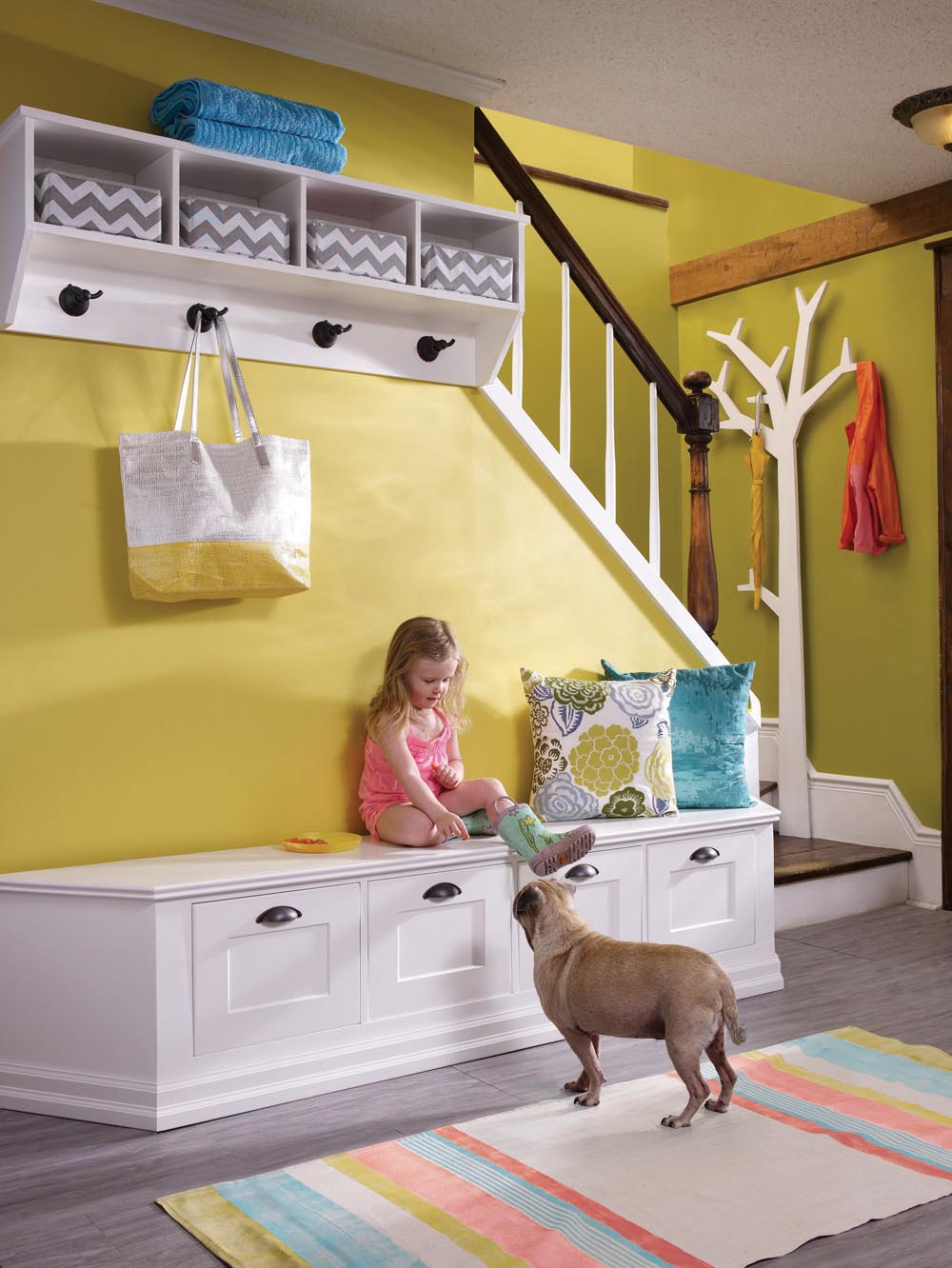Are you hesitant about using strong colour in your dcor? If so, try it out in small doses. The kitchen in the featured photograph uses two vibrant colours Peacock s Plume and Lime Twist.
The darker colour definitely makes a statement but is not overpowering or gloomy. This is because the actual painted surfaces only make up about one-quarter of the visual room space. The light cabinets break up the rich wall colour while the flooring and countertop maintain a light, airy feel to the room. The accent colour on the backsplash and window treatment is a fresh colour that keeps things bright.
Read Also

Cool cooking: Eat well this summer without heating up the house
Make delicious summer meals that keep the house cool at the same time. Here are some tips and recipes from Getty Stewart to avoid sweating in a hot kitchen.
Using bold colours on smaller wall surfaces is a great way to introduce rich colour without a full commitment. It will be an easy fix to repaint these small sections if you re not happy with your colour choice or when your tastes change down the road.
Other areas to try
The bathroom can be another great room for trying bold colour because the wall space is broken up by cabinets, fixtures and mirrors. Don t be concerned about using a bold colour in a small space. Sometimes smaller rooms can take a strong dose of colour quite successfully. Remember, unlike a kitchen or family room, you re not in the bathroom for long stretches of time so it s less likely that a daring wall colour will be offensive.
Areas of a home that have light-coloured wainscotting are other great places to try a daring wall colour. For instance along the upper area of a wainscotted stairway or dining room. Any artwork hung on the rich wall colour will further reduce any strong visual impact and will make the artwork really pop.
Lighting is important in any room but especially if you re using darker tones. Unless you are trying to create a cave-like atmosphere in a den or television room, you want to ensure that good, overall lighting is included in your decorating plans. The recessed pot lights in the featured photograph provide consistent lighting for the room while accent lights highlight work areas.
Choosing the right colour
Selecting the right bold colour for a space can be difficult, but there are a few tips that may help. Try to stay within either a warm or cool colour palette depending upon your room.
In the feature kitchen the cabinets and flooring are made of a honey-coloured wood that has yellow undertones. This would be considered a warm colour or warm tone. If you re working with warm tones, choose a paint colour from the warm colour family. The Peacock s Plume and Lime Twist paint are warm colours that work with the cabinets, as opposed to a cool colour like steel grey. Other warm colours like a brick red or orange could work as well.
Don t fret just yet
Once you ve made your bold choice, don t be derailed or concerned when the colour first goes on the wall. It may seem overwhelming since the walls will be bare of artwork or accessories. Once everything is back in its place everything will look different. Also, be sure to apply at least two or three coats to ensure a proper, consistent tone.
If you don t want to go bold with paint, then try window treatments, area rugs, artwork, accent items (like toss cushions or small furniture pieces) or linens. Once you gain confidence with your colour choices then you can move on to bigger and bolder things. Maybe you ve always dreamed of having a red kitchen or dining room, deep-purple bedroom or orange powder room.
Begin in a room that is closed off from the rest of the main living areas. A bedroom or bathroom is a good start. If you put a rich wall colour in a dining room in an open-concept home, the rest of the pale walls will seem out of place. Once you re comfortable with your colour choices in a smaller space, then you can tackle the open-concept or double-duty spaces like a living/dining room.
Wall colour isn t permanent so the worst that can happen is you ll have to repaint. If you start with small wall spaces then the risk is minimal.
Connie Oliver is an interior designer from Winnipeg














